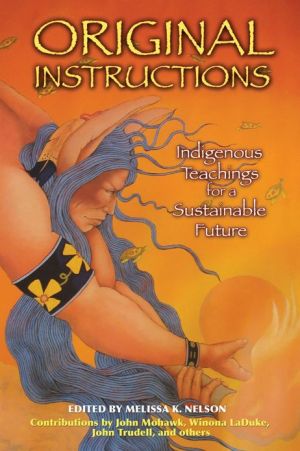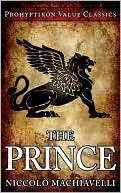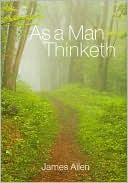Original Instructions: Indigenous Teachings for a Sustainable Future
Indigenous leaders and other visionaries suggest solutions to today’s global crisis\ • Original Instructions are ancient ways of living from the heart of humanity within the heart of nature\ • Explores the convergence of indigenous and contemporary science and the re-indigenization of the world’s peoples\ • Includes authoritative indigenous voices, including John Mohawk and Winona LaDuke\ For millennia the world’s indigenous peoples have acted as guardians of the web of life for the next...
Search in google:
Original Instructions presents the ancient teachings for sustainable living that are safeguarded and maintained by indigenous peoples. With contributions from John Mohawk, Winona LaDuke, Chief Oren Lyons, and others, these voices tell us how to live with a light footprint--in gratitude and with reverence for community and all creation.
from Chapter 26\ Cultural Change, Climate Change, and the Future of Civilization\ by John Mohawk\ The most foolish thing that the United States government has ever done was to launch a centuries-long campaign to eradicate indigenous cultures. A great deal of profound knowledge and wisdom was lost—wisdom we could desperately use today.\ About thirty years ago, I was attending a meeting at the Onondaga longhouse in New York, and the guests at that longhouse were from Hopi country in Arizona. One of them, Thomas Banyaca, a translator for some of the Hopi elders who had journeyed to us, had a story from the elders to tell. Their story was that the world had more or less come to an end a few times, but that some native people had survived, and they’d come to be aware that it was an inattention to and a disrespect for nature that had been at the root of their problems. Life on earth had been threatened, and certainly civilization had been threatened, because people had abandoned a respect for nature. And now this was happening again.\ The elders had sent Thomas forward to try to explain this to the world, to give us all a warning. (At one point he even addressed the United Nations.) The elders also said we should look at the white men’s written records to find evidence to support what they were saying. I took that job on and began to do research. I discovered that the anthropologists who looked at the Maya civilization and its very curious collapse in the ninth century have been puzzled. It doesn’t seem that the Maya were overwhelmed by invaders or had a devastating internal civil war. It looks as though there had been a huge population, especially living around Tikal, and that suddenly in the space of 100 years—around 900 AD—their civilization collapsed and the people disappeared. There’s no evidence that they migrated, because there’s no corresponding evidence of increased populations in some surrounding area. It looks as if they simply vanished.\ One intriguing hypothesis suggested that sudden climate change might have been to blame. Scientists looked at ice cores from Greenland corresponding to the period around 900 AD and discovered that that century had been extremely cold, far colder than usual. They used computer simulations to look at what the global climate would likely have been under those conditions of extreme cold in the northern latitudes. Drought in Central America was one predicted outcome. It turns out that one of the symbols that comes up a lot in Maya inscriptions, at this time of collapse, is the symbol for drought. Core samples of deep layers of mud from lakes in Mexico confirmed that a severe drought had indeed occurred at that time.\ When we come to the desert Southwest, we find a lot of evidence of civilizations there that became quite sophisticated in the use of irrigation. They dug canals, made holding ponds, and so on. But there, too, several civilizations simply vanished, leaving behind impressive buildings such as the Mesa Verde complex. Something happened.\ In Bolivia and Peru, agriculture found its way into the most extreme environments, environments that were higher up the mountains, further into the desert, and deeper into the rain forests. Not only that, but these indigineous peoples discovered, cultivated, transformed, and changed more species of plants into cultivars (food crops) than any other complex of cultures in the history of the world. Those Andean cultures created more than 3,000 varieties of cultivated plants—an almost mind-boggling achievement.\ Incan society organized itself to be able to grow food in very different ecosystems under very different conditions to make sure that in the years when food supplies failed in one place, the people in that place didn’t starve because some place else people had a successful growing season. They understood that reciprocity was a survival strategy, and they carried this practice on for centuries. In fact, they were growing more and better food in the Andes than they are now.\ Starting around about the fourth century AD, the area we now call Central Asia, those huge steppes then populated mostly by nomadic herding cultures, also suffered severe climate changes including drought and extreme cold weather that began to cause some of these tribes of herdsmen to move en masse, eventually pushing some groups into Europe. These massive population movements and invasions ultimately pushed the tribes living north of the Roman Empire (Goths, Visigoths, and Vandals) into Italy to topple Rome. There were other factors in the decline and fall of Rome, but this climate change most likely played a crucial role. These past episodes may offer us clues about the future of our civilization. They show us, at the very least, that civilizations can be very fragile in the face of climate change.\ Later, in the late Middle Ages and beyond, an overcrowded, filthy, and highly unsanitary Europe was having to contend constantly with the “Four Horsemen of the Apocalypse”—disease, war, famine, and death—while in America the problems were different. The climate kept changing and civilizations were collapsing. But the Indians were learning how to cope with it, discovering how to plant plants that survived drought and cold weather. They were creating a version of what some people today call “permaculture,” but a permaculture for the ages that understood that climate wouldn’t necessarily remain stable.\ That’s why I say the stupidest thing the colonists and their governments ever did was to suppress Indian culture, because climate change is coming again, and those cultures had a lot of very practical knowledge about how to adjust and survive. A high-tech civilization that depends on running water, electricity, bridges, and so on is far more fragile than we realize. The Hopi were right: Western civilization will face the same kind of challenges the ancient civilizations faced, but we’re not ready to deal with them. Hopi elders have some important messages for us, but, so far, we’re not listening.
Acknowledgments xvAbout Bioneers xviiBioneers and Editor's Statement on Indigenous Knowledge and Intellectual Property Rights xixPreface: Remembering the Original Instructions Kenny Ausubel xxiIntroduction: Lighting the Sun of Our Future-How These Teachings Can Provide Illumination Melissa K. Nelson 1Uncovering the Eco-Spiritual Values of the Original InstructionsListening to Natural Law Chief Oren Lyons 22First Nations Survival and the Future of the Earth Rebecca Adamson 27Acoma Coexistence and Continuance Petuuche Gilbert 36Ethics from the Land: Traditional Protocols and the Maintenance of Peace Marlowe Sam 39Indigenous Knowledge as the Basis for Our Future Priscilla Settee 42Clear Thinking: A Positive Solitary View of Nature John Mohawk 48Indigenous DemocraciesThe Iroquois Confederacy John Mohawk 54A Democracy Based on Peace Chief Oren Lyons 59An Okanagan Worldview of Society Jeannette Armstrong 66Peace Technologies from the San Bushmen of Africa Megan Biesele Kxao = Oma. /'Angn!ao/'Un 75The Art and Science of KinshipWhere Is the Holy Land? Leslie Gray 86Restoring Indigenous History and Culture to Nature Dennis Martinez Enrique Salmon Melissa K. Nelson 88Protecting Water Quality and Religious Freedom at the Isleta Pueblo Verna Williamson-Teller 116The Art of Thriving in Place John Mohawk 126Indigenous Feminine Power: in Honor of Sky WomanShe Is Us: Thought Woman and the Sustainability of Worship Paula Gunn Allen 138Ethiopian Women: From Passive Resources to Active Citizens Bogaletch Gebre 145Powerful Like a River: Reweaving the Web of Our Lives in Defense of Environmental and Reproductive Justice Katsi Cook 154You Are Where You Eat: Native Foods and Traditional AgricultureFrom the First to the Last Bite: Learning from the Food Knowledge of Our Ancestors John Mohawk 170Re-Indigenizing Our Bodies and Minds through Native Foods Melissa K. Nelson 180Dancing for the Apus: Andean Food and Farming Julio Valladolid Rivera 196On the Importance of Our Connection to Food Jacquelyn Ross 201Protecting the Culture and Genetics of Wild Rice Winona LaDuke 206Cultural Change, Climate Change, and the Future of Civilization John Mohawk 215Decolonization and Global Indigenous Struggles for JusticeProtecting the Web of Life: Indigenous Knowledge and Biojustice Tom Goldtooth 220Return of the Ancient Council Ways: Indigenous Survival in Chiapas Ohki Simine Forest 229Front Line of Resistance: Indigenous Peoples and Energy Development Clayton Thomas-Muller 239Speaking for the Voiceless Richard Deer Track 247Re-IndigenizationRe-Indigenization Defined Greg Cajete John Mohawk Julio Valladolid Rivera 252El Poder de la Palabra/The Power of the Word: Toward a Nahuatl/Mestizo Consciousness Francisco X. Alarcon 265Mending the Split-Head Society with Trickster Consciousness Melissa K. Nelson 288Re-Nativization in North and South America Tirso Gonzales 298Taro Roots Run Deep: Hawaiian Restoration of Sacred Foods and Communities Mark Paikuli-Stride Eric Enos Nalani Minton 304The Power of Being a Human Being John Trudell 318Indigenous Resources 324Notes 338Bibliography 343Contributors 347
\ Bill McKibben“Buckminster Fuller once complained that the earth had come without a good operating manual. In fact, though, there are an awful lot of instructions that have stood the test of time. Since we’re clearly making a mess of things at the moment, it might be wise to pay some attention.”\ \ \ \ \ Kenny Ausubel“Original Instructions shows how human beings can actually play a richly positive role in the web of life as a keystone species that creates conditions conducive to life for all beings. Here is the sacred geography of a world where all life is revered and animated by spirit.”\ \ \ Gregory Cajete“Melissa Nelson, in collaboration with Bioneers, has produced an invaluable resource of Indigenous wisdom. This book is a must-read for every socially conscious political leader, member of the clergy, educator, activist, community worker, and entrepreneur interested in participating in the creation of a new and more ecologically sound worldview, one that will be capable of sustaining society in an era of significant global climate change.”\ \ \ \ \ Deborah Donovan"These indigenous activists have much to share, and they serve as crucial voices in the worldwide effort to restore our ailing planet."\ \ \ \ \ Kathryn Price" . . . a remarkable reminder that there are people out there doing critical work to safeguard our very existence. This book contains detailed information about the current programs and teachings from some of the best minds on the subject."\ \ \ \ \ The Midwest Book Review" . . . will appeal both to New Age and Native American collections . . . an eye-opening survey of sacred geography and a spirit-driven world."\ \ \ \ \ Griselda Steiner" . . . this book presents 'How To' earth wisdom that should be at the forefront of global efforts to restore the planet."\ \ \ \ \ B.E. Johansen" . . . cogent advice on how people in the world's old growth indigenous societies conduct their relations with each other and the Earth—are couched here in starkly modern terms as questions of sustainability become global fare. . . . The subject matter of this book is eclectic, ranging from toxic chemicals to global warming, changing roles of women, revival of Native languages, "bio-justice", "bio-ethics", and "bio-democracy".\ \ \ \ \ D. Tigermoon"The general themes running through the writings . . . are all very applicable to current problems, and thought provoking. The book has a wealth of information, and many resources for further research and study."\ \ \ \ \ Vesta Elliott"I highly recommend this book. It's the dawning of an era and we must do our part to ensure a positive future for our children."\ \ \ \ \ From the Publisher\ "I highly recommend this book. It's the dawning of an era and we must do our part to ensure a positive future for our children."\ \








